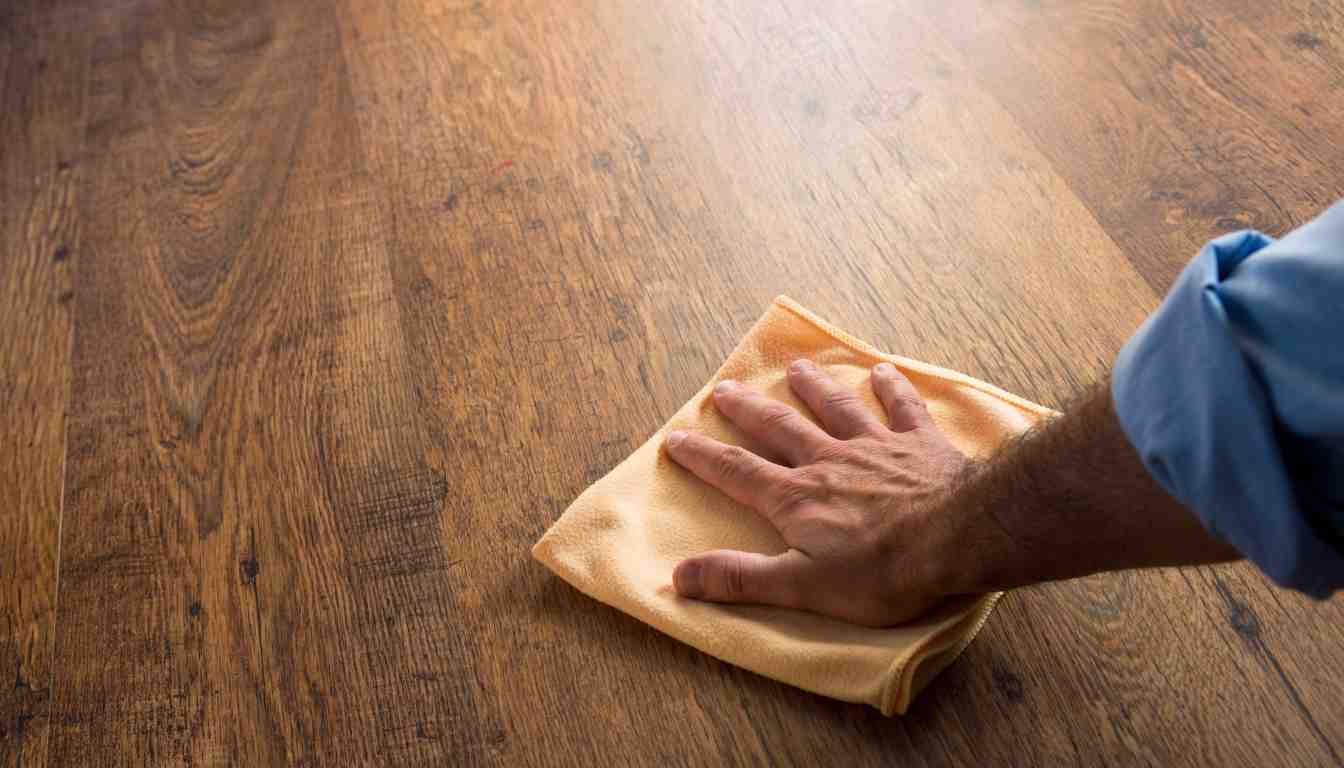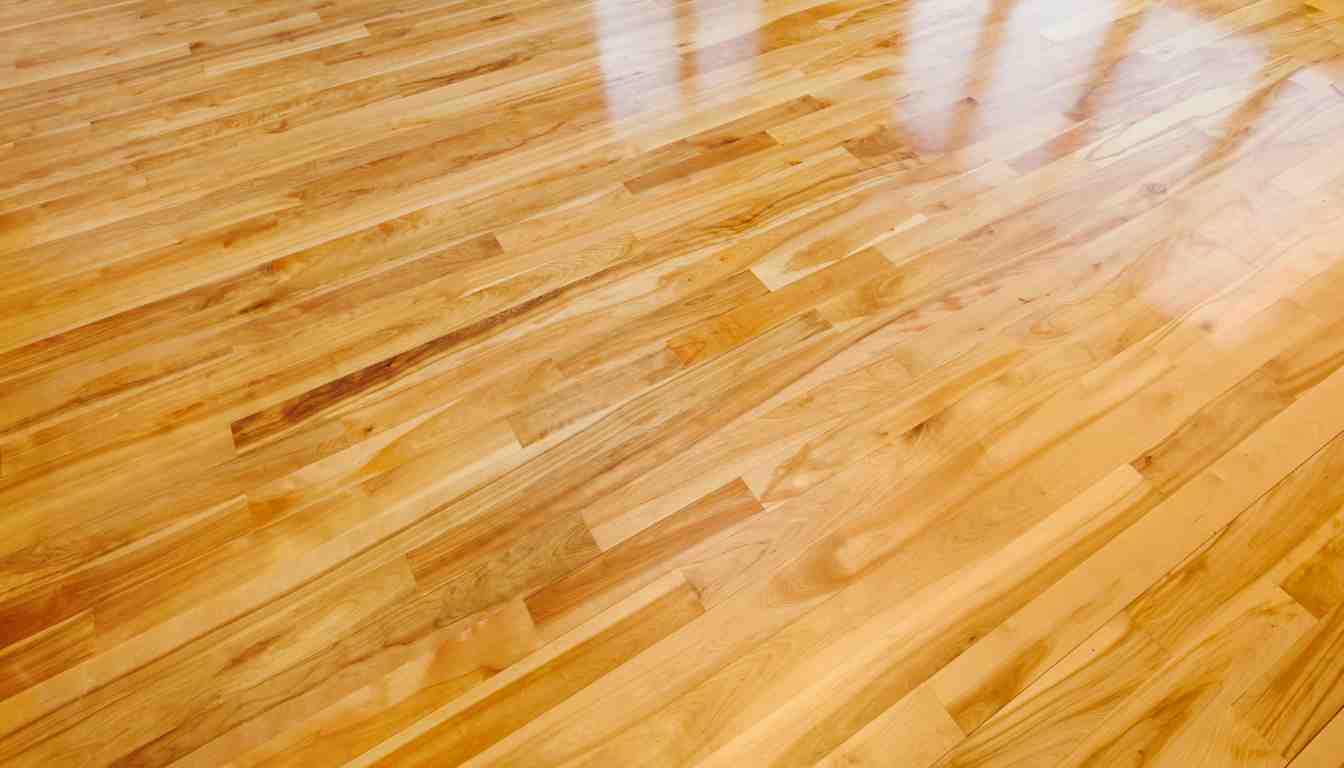To get spray paint off of hardwood floors, gently apply acetone on a cloth and rub the affected area until the paint is removed. Spray paint can sometimes unintentionally end up on hardwood floors, causing unsightly and stubborn stains.
Luckily, removing spray paint from hardwood floors can be achieved with the help of a few simple steps. We will outline an effective method to get rid of spray paint from hardwood floors. By following these instructions, you can restore the beauty of your floors without causing any damage.
Method 1: Using Common Household Items
Remove spray paint from hardwood floors using common household items with this method. These easy and effective steps will help restore the natural beauty of your hardwood floors without causing any damage.
If you have accidentally sprayed paint on your hardwood floors, don’t panic! There are several common household items that can help you remove the paint without causing any damage. Follow these simple steps to effectively remove spray paint from your beautiful hardwood floors.
Step 1: Assess The Damage
Before you begin the paint removal process, take a close look at the affected area to assess the extent of the damage. Determine whether the paint is fresh or has dried on the surface. This will help you choose the most appropriate method for removing the spray paint.
Step 2: Gather Necessary Supplies
Next, gather all the necessary supplies you will need for the paint removal process. This includes protective gloves, a soft cloth or sponge, a plastic scraper, and the chosen household item such as rubbing alcohol, vinegar, or acetone. Having everything readily available will make the process smoother and more efficient.
Step 3: Test On A Small Inconspicuous Area
Before applying the chosen household item on the entire affected area, test it on a small inconspicuous area of the floor. This will help you ensure that the household item does not cause any discoloration, damage, or negative reaction with the finish of the hardwood. If there are no adverse effects, proceed to the next step.
Step 4: Apply The Chosen Household Item
Apply a small amount of the chosen household item, such as rubbing alcohol, vinegar, or acetone, onto a soft cloth or sponge. Gently dab the cloth or sponge on the spray paint, focusing on the affected area. Let the household item sit for a few minutes to loosen the paint.
Step 5: Gently Scrub The Affected Area
Using a plastic scraper or a soft cloth, gently scrub the affected area in circular motions. Be careful not to apply too much pressure, as this could cause scratches on the hardwood surface. Continue scrubbing until the paint starts to lift off.
Step 6: Rinse And Dry The Floor
Once the paint has been removed, rinse the floor with clean water to remove any residue from the household item. Use a clean cloth or sponge to dry the area thoroughly. Avoid leaving any moisture on the hardwood, as this can damage the wood or lead to discoloration.
Step 7: Assess The Outcome
After the floor has dried completely, assess the outcome of the paint removal process. Check if any remnants of the paint are still visible or if any damage has occurred to the hardwood. If necessary, you can repeat the process or consider professional assistance if the paint is stubborn or the damage is extensive.
By following these simple steps and using common household items, you can effectively remove spray paint from your hardwood floors and restore their natural beauty. Remember to always be cautious and gentle when handling the floor to avoid any accidental damage.

Method 2: Utilizing Specialized Paint Removers
Spray painting can sometimes lead to accidental splatters or spills on your beautiful hardwood floors. In such cases, you need to act quickly to remove the paint without damaging the wood. One effective method for tackling this issue is by utilizing specialized paint removers. These products are designed to break down the paint particles, making it easier for you to remove them from your hardwood floors. Here is a step-by-step guide to using this method effectively:
Step 1: Choose An Appropriate Paint Remover
When choosing a paint remover, make sure it is suitable for use on hardwood floors. Look for products specifically formulated for removing spray paint, as they will be more effective and less likely to cause damage. Read the product labels carefully to ensure they are safe for use on your flooring material.
Step 2: Prepare The Area
Before applying the paint remover, it is essential to prepare the area properly. Clear the floor of any furniture or obstacles that may hinder your progress. Use a drop cloth or plastic sheeting to protect surrounding areas and ensure that the paint remover you are using does not cause any unwanted stains or damage.
Step 3: Apply The Paint Remover
Following the instructions on the product label, apply a generous amount of paint remover directly onto the affected areas of the hardwood floor. Use a paintbrush or a soft cloth to evenly distribute the remover and ensure complete coverage.
Step 4: Let It Sit And Penetrate The Paint
Allow the paint remover to sit on the painted surface for the recommended amount of time, as mentioned on the product label. This will allow the remover to penetrate the layers of paint and break down the particles for easier removal.
Step 5: Use A Scraper Or Scrub Brush To Remove The Paint
Once the paint remover has had sufficient time to work, use a scraper or a soft-bristle scrub brush to gently remove the paint from the hardwood floor. Be cautious not to apply too much pressure, as this may cause damage to the wood. Work in small sections, gradually removing the paint until the floor is clean.
Step 6: Clean The Area And Assess The Result
After removing the paint, clean the area with a damp cloth or mop to remove any residue from the paint remover. Once the floor is dry, carefully assess the result. If there are any remaining traces of paint, you may need to repeat the process or consider seeking professional help to ensure a thorough clean without damaging your hardwood floors.

Method 3: Seeking Professional Help
Looking for professional assistance is recommended for removing spray paint from hardwood floors. Expert help ensures damage-free removal and a restored appearance to your wooden floors.
If the spray paint on your hardwood floors seems too stubborn to remove on your own, seeking professional help is a wise choice. Professional services have the expertise and equipment necessary to safely and effectively remove the paint without causing further damage to your floors. This method can save you time and effort, ensuring your hardwood floors are restored to their original beauty. Follow these steps to find the right professionals and get your hardwood floors looking good as new.
Step 1: Evaluate The Severity Of The Paint Damage
First, assess the severity of the spray paint damage on your hardwood floors. Determine if the paint is superficial or if it has penetrated deep into the wood grain. By evaluating the extent of the damage, you can communicate your specific needs to the professional service providers, helping them tailor their approach accordingly.
Step 2: Research And Find Professional Services
Next, research and find professional services specializing in the removal of paint from hardwood floors. Look for experienced companies with positive customer reviews and a track record of successful paint removal. Consider asking for recommendations from friends, family, or your local community to ensure you find reputable professionals who deliver quality results.
Step 3: Get Quotes And Compare
Contact multiple professional services and request quotes for the paint removal job. Provide them with details about the spray paint damage on your hardwood floors to receive accurate estimates. Comparing quotes from different providers can help you identify a suitable service that offers competitive pricing without compromising on the quality of work.
Step 4: Schedule An Appointment
Once you have selected a professional service that meets your requirements, schedule an appointment for them to assess the spray paint damage in person. This allows the professionals to properly evaluate the situation and determine the best approach for removing the paint from your hardwood floors. Be sure to choose a convenient date and time that works for both parties.
Step 5: Prepare The Area
Before the professionals arrive, prepare the area by removing any furniture or objects that may hinder their ability to work efficiently. Clearing the workspace allows the professionals to have unrestricted access to the affected areas, enabling them to focus solely on removing the spray paint from your hardwood floors.
Step 6: Let The Professionals Handle The Removal
Once the professionals arrive at your home, step back and let them do their job. They will utilize their expertise and specialized tools to safely and effectively remove the spray paint from your hardwood floors. By allowing the professionals to handle the task, you can have peace of mind knowing that your floors are in capable hands.
Step 7: Evaluate The Outcome
After the paint removal process is complete, take the time to inspect the outcome. Ensure that the spray paint has been completely removed from your hardwood floors and that there is no residual damage. If you are satisfied with the results, express your gratitude to the professionals for their hard work. In the event that you are not completely satisfied, communicate your concerns to the service provider, allowing them the opportunity to address any issues.
Conclusion
To sum up, removing spray paint from hardwood floors can be a daunting task, but with the right techniques, it is not impossible. By using household items like rubbing alcohol or acetone and following the step-by-step methods outlined in this blog post, you can restore the beauty of your hardwood floors.
Remember to be patient and cautious when working on such delicate surfaces. With proper care and attention, your floors will soon be paint-free and vibrant again.


